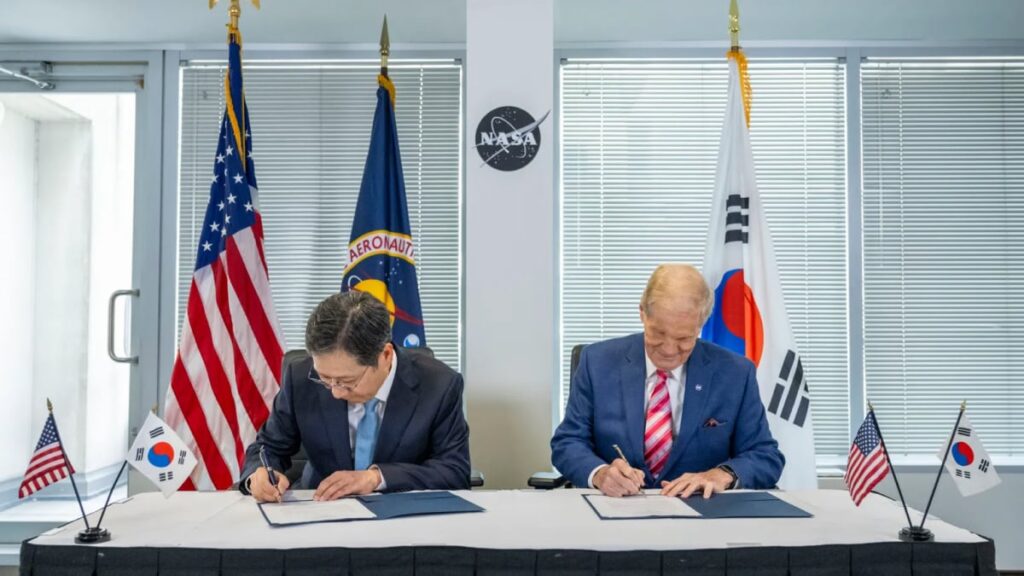NASA and South Korea’s newly founded Korea AeroSpace Administration (KASA) have entered into an agreement to launch a joint mission to explore one of the last unexplored regions of space: the Sun-Earth Lagrange point 4 (L4). This unexplored region lies in a stable position in space, where the gravitational forces of the Sun and Earth balance each other, allowing spacecraft to remain in a fixed position relative to the two bodies.
A new era of space cooperation
On September 19, NASA Administrator Bill Nelson and KASA Administrator Youngbin Yoon signed a joint statement cementing the growing collaboration between the two space agencies. The agreement highlights joint efforts in areas such as NASA’s Moon-to-Mars architecture, space life sciences, lunar surface exploration and space communications. It also includes the use of South Korea’s deep space antenna, further strengthening this international partnership.
During the signing ceremony, NASA Administrator Nelson remarked, “We are proud to significantly develop our partnership with the Republic of Korea and its new space agency.” This joint mission builds on the longstanding cooperation between the United States and South Korea, particularly in space science and technology.
Investigation of Lagrange point 4
One of the central elements of this new collaboration is a mission to Lagrange Point 4, a unique region of space that has never been visited by spacecraft. While other Lagrange points, such as L1 and L2, are home to missions such as the James Webb Space Telescope and the DSCOVR satellite, L4 has remained unexplored. Located 60 degrees ahead of Earth’s orbit, it offers a gravitationally stable vantage point for observing the sun and solar winds.
South Korea plans to establish a solar wind observation station at L4, which could lead to significant advances in our understanding of cosmic radiation and the interaction between the solar wind and Earth’s magnetosphere. The mission will also focus on data transmission, optical communications and potential relay use at this unique point in space.
Although there is no confirmed launch date for the Lagrange Point 4 mission, it promises to open new avenues for exploration and deepen international cooperation in space exploration.


